FiiO X3 II: good sound in your pocket you can afford
Players with a claim to high-quality sound are produced by many companies, but to call accessible most of them the language does not turn - the price of owning a high-tech pocket-sized audio player is tens and sometimes hundreds of thousands of rubles. The reasons for the high cost are many - ranging from high-quality audio and ending with overpayment for the brand. But, no matter how great these compact masterpieces are, a simple music lover cannot reach them with a wallet. If only because seven in the shops and still have to fly to the seas in summer.

FiiO company is known in the circles of lovers of high-quality sound product availability, whether it be a player, headphones or a leather case. One of the players - FiiO X3 - turned out to be particularly successful, as it combined a relatively low price and good sound. By tradition, FiiO has released an improved and revised version of the X3, naming it X3 II . There are also X3K, which, according to rumors, is the same X3 II, only in earlier versions and in the style of the company's nominal traditions. Now - more about the re-released hit.

')
Packed in a radically black box:

The player is reliably protected from damage from all sides by the foam material:

The package bundle is rich: replaceable stickers on the case, three screen protectors, a USB cable, an adapter from a jack to a tulip, and a lot of printed materials in a black envelope.

In appearance and sensation, the X3 II is a practical and solid bar: moderately heavy, in order not to resemble consumer goods for 500 rubles from the Soyuzpechat kiosk, and at the same time compact enough and light enough not to delay the jacket pocket.

Body material - metal; apparently aluminum. Protected silicone cover from external mechanical influences. It is ugly to look that in some cases is beneficial;)

Most of the internal space of the volumetric case is occupied by a capacious battery, which, according to the manufacturer, allows the music to play for about eleven hours. In practice, this parameter varies from 9 to 10.5 hours depending on the headphones used and volume. To fully replenish the charge from microUSB, it takes about four hours, in some cases (poor output, bad “phone” charging) all five went away.

Cirrus Logic CS4398-CZZ is used as a D / A converter, while AD8692 and LM4562 low-noise amplifiers are installed in the analog path. This made it possible to achieve a very good sound quality for a device of this price category.

Outputs are traditionally two - on headphones and balanced.

The controls are eight buttons and one rotating dial.
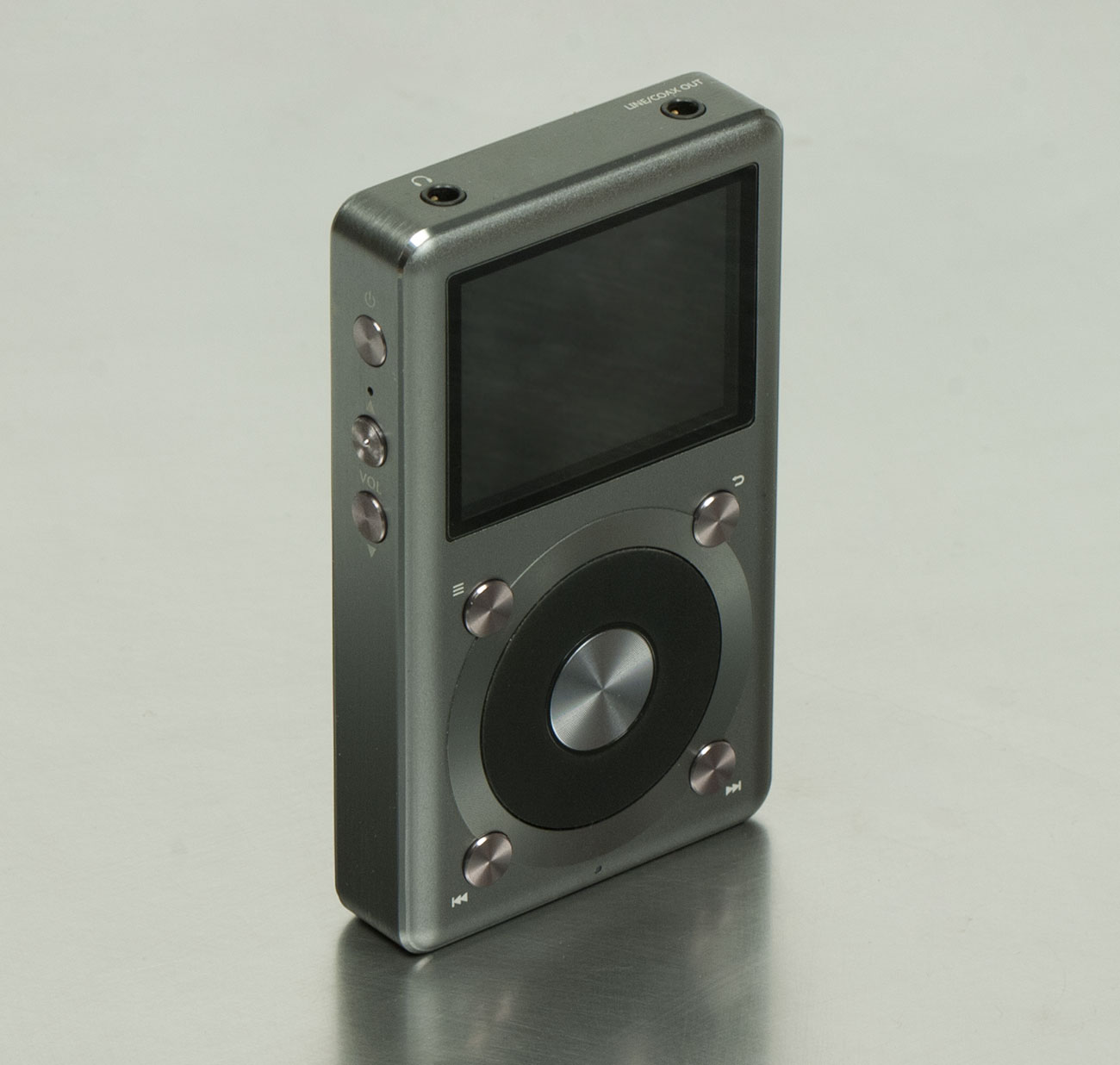
Three are placed on the end - on and volume control.
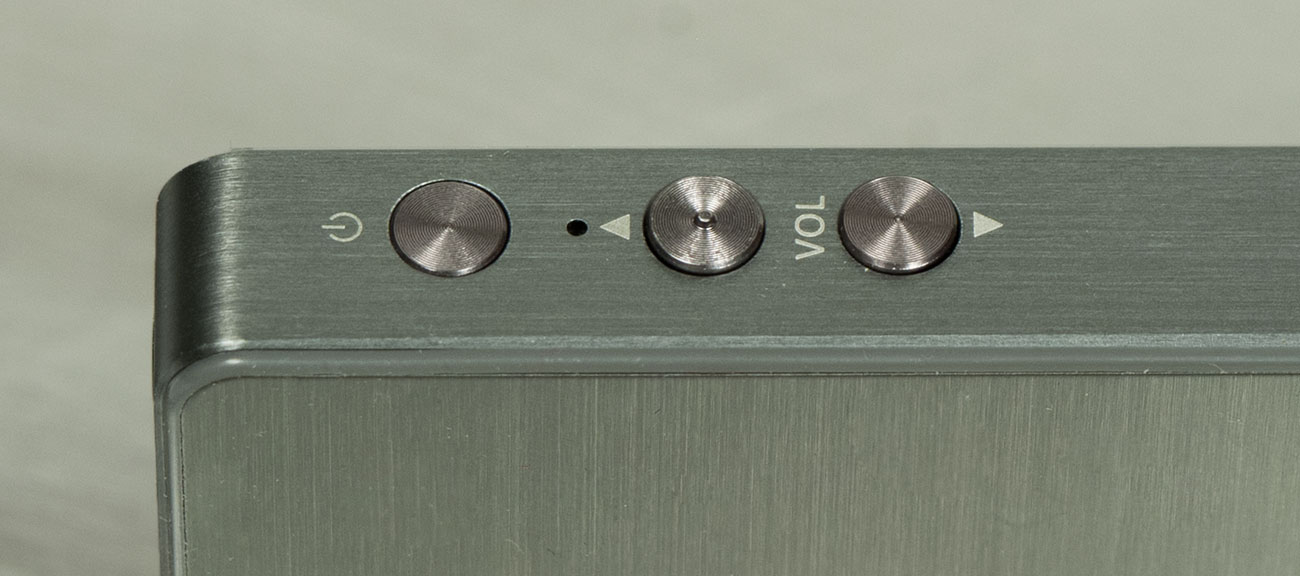
The remaining five on the front, under a small two-inch screen.

The purpose of each button is indicated by a series of letters or symbols. The dot indicator displays the status of the player at the moment, and also illustrates the charging process.
There are no complaints about the screen: moderately bright and informative. The absence of a tacha does not bother at all, quite the contrary. The fact is that the Hold function of the X3 II is implemented in a peculiar way: as soon as the screen goes blank, all buttons except power are turned off by default; a short press on it returns the image to the display. Accordingly, for “intra-pocket” track management (go to the next, pause), you have to press on the power, which is inconvenient. The developers took into account this moment and now it is allowed to select active buttons in the absence of an image.

If we are talking about the usability of X3 II, we need to mention the second controversial point: font size. It is too small, and there is no reasonable explanation for the seventh point - the size of the screen allows you to display information in letters one and a half times larger without sacrificing readability. What is done in one of the firmware, which can be poured into the device yourself.

The general settings menu causes a double impression: intuitively simple and understandable, but the meaning of individual items is not clear on the fly.

For example, “management of linear headphones” or “resetting the media library” (when there is a little “above update the media library”). Having got used to these and some other petty oddities, you stop noticing them, but at first they periodically put them in a stupor.
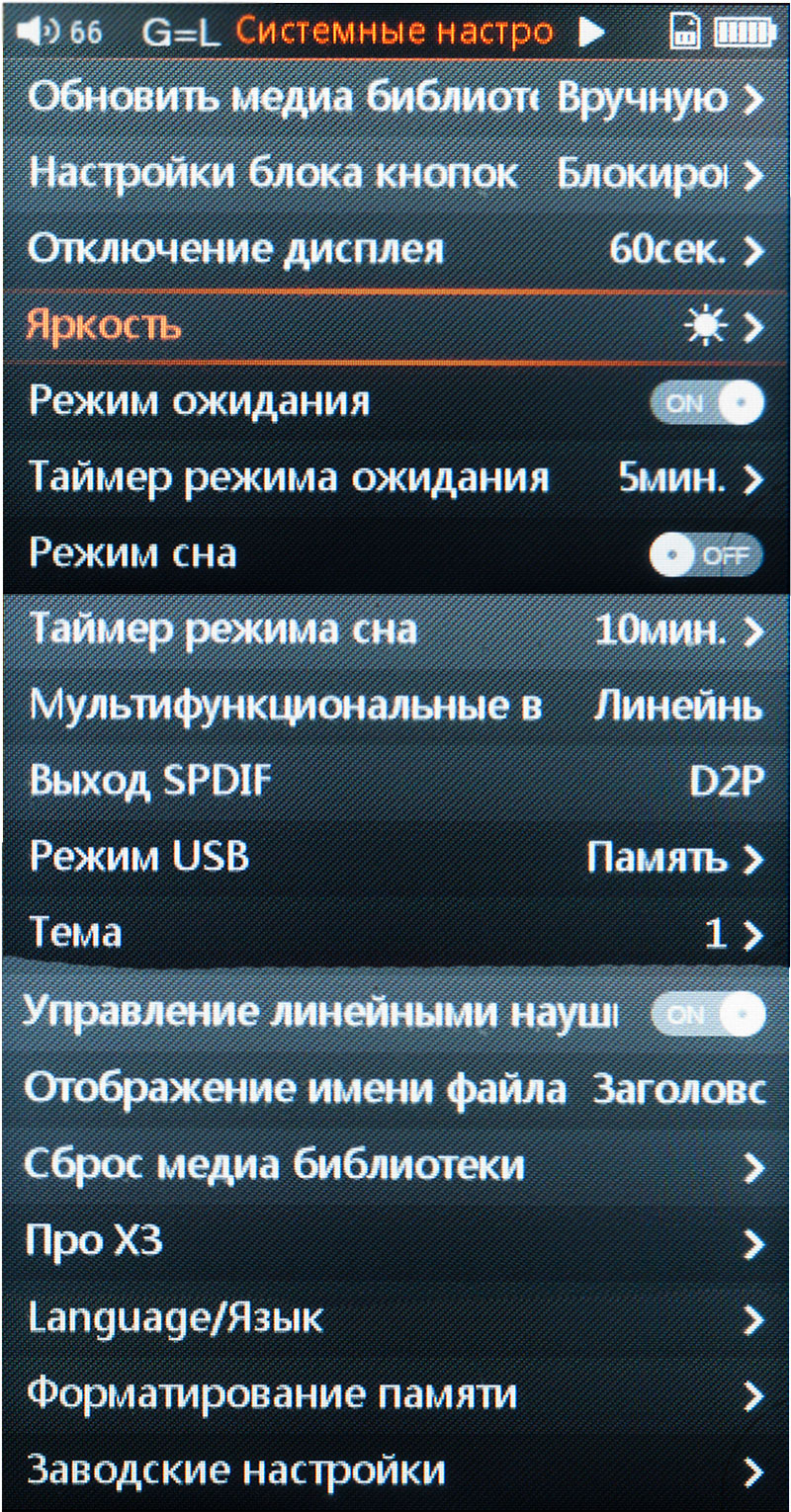
Playback settings are collected in a separate category, a total of 14 points. Most of them (equalizer, gain mode, low pass filter, etc.) allow you to adjust the sound to suit your own tastes and, depending on the headphones used, give a different effect.


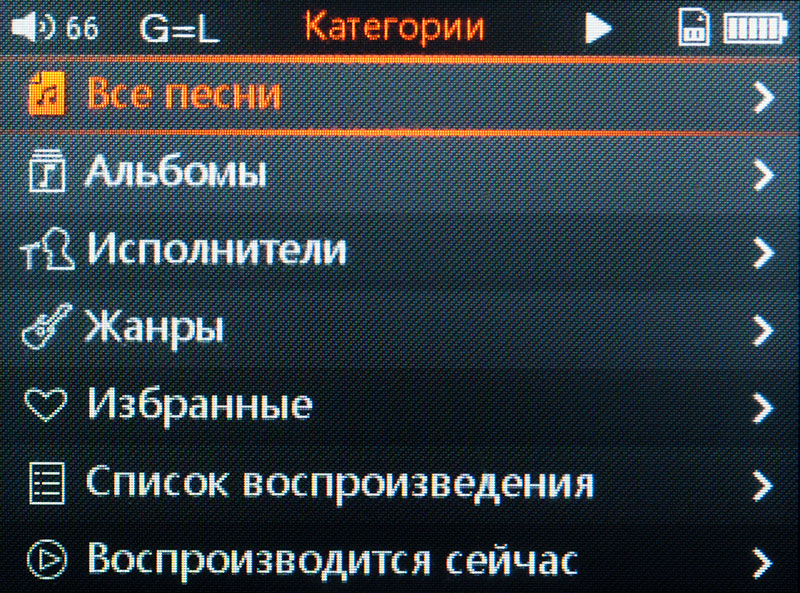
A rotating disk, or, in a simple way, a twist, helps in navigating through the library. The number and size of tracks recorded in memory is determined by the amount of the installed microSD card.

The idea of a removable drive is also pleasant with the possibility of quick replacement, as in the lossless format the tracks weigh a lot, and everything will not fit on one card. You can upload music both through the card reader and through the player itself - when connected to the PC, the SD is shared as a removable drive.




About the sound quality. It is expectedly good, only when changing different types of headphones, the playback style changes slightly. According to subjective sensations, complex instrumental and electronic music sounds best, the classics almost lacked detail. By the way, the detailing is largely dependent on the headphones, the change in sound settings has almost no effect on this parameter. Problems with playing normal mp3 (in terms of sound), which some users impute to X3 II, did not find.
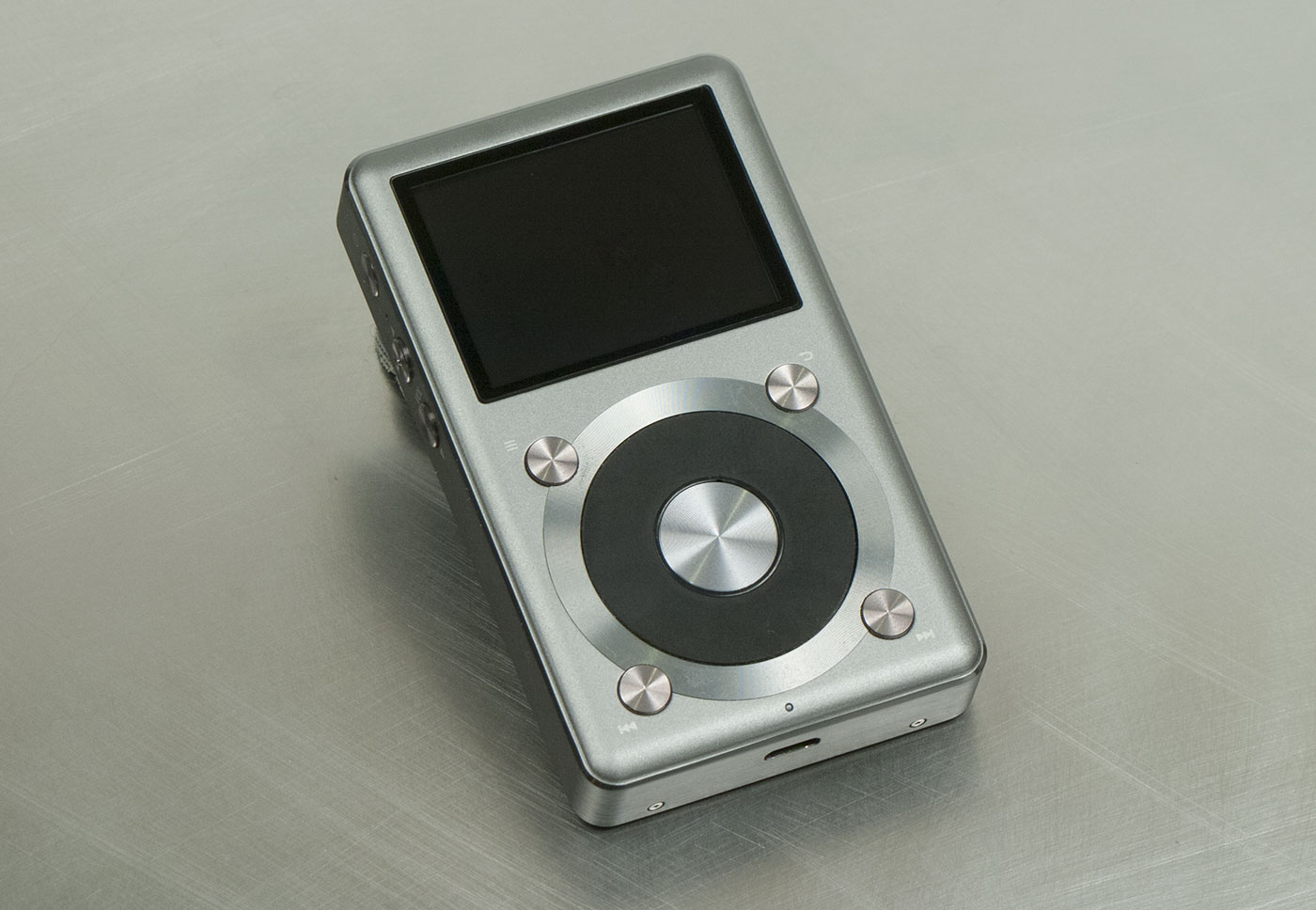
In general, FiiO X3 of the second generation made a very pleasant impression: easy to use, well-assembled and with a good electronic filling. Some strange settings and a not very good localization of the menu can be considered a fly in the ointment, but there are no other complaints.
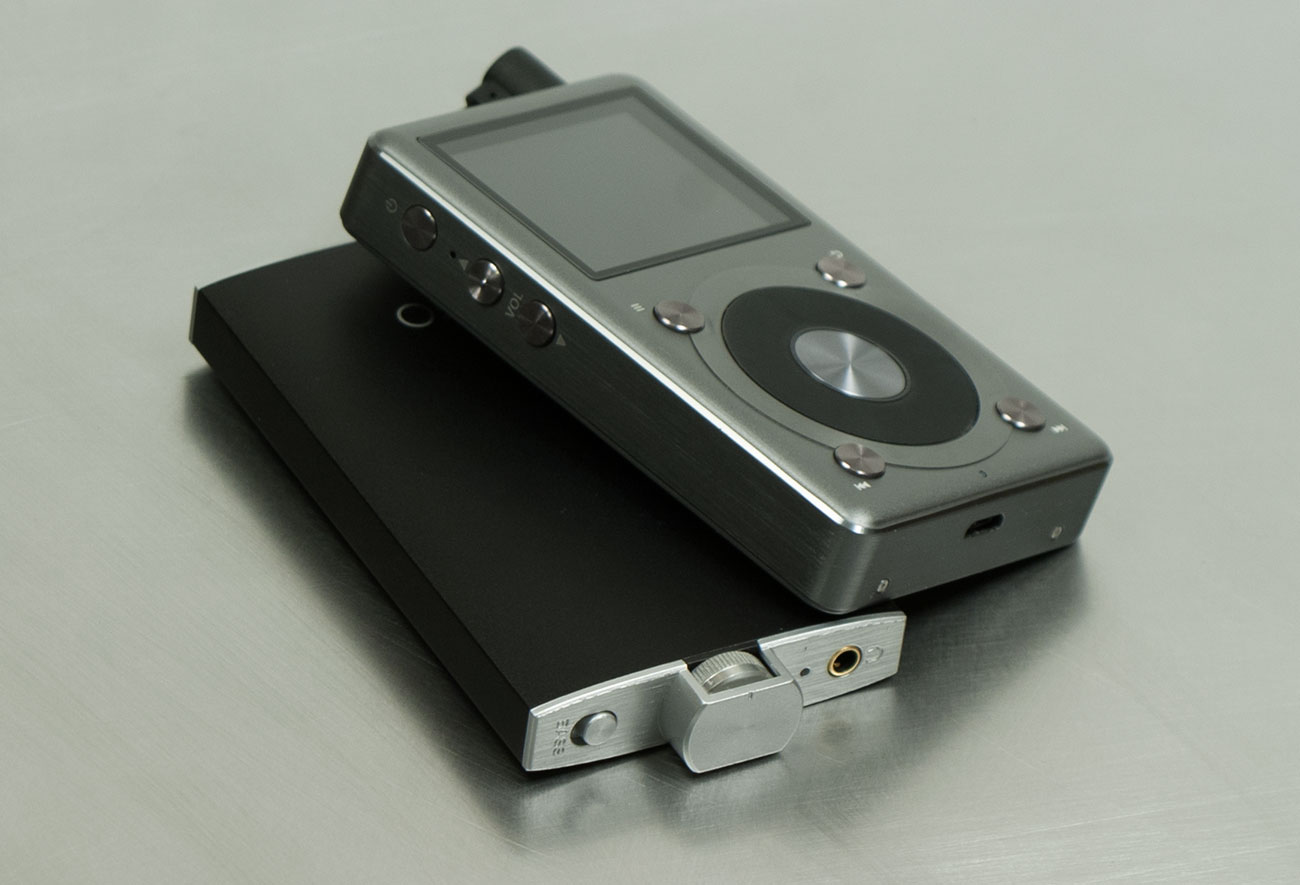
DAC: Cirrus Logic CS4398-CZZ
Display: 2 "TFT (320x240)
Memory: MicroSD (up to 128 GB)
Frequency range: 10 - 55.000 Hz
OIG + H: <0.001% (1 kHz)
Balance: 5 dB
Headphone impedance range: 16 - 150 ohm
Equalizer: 10-band (± 6dB)
Dimensions: 97 x 58 x 16 mm
Weight: 135 g
Outputs: coaxial, linear (3.5 mm), headphone (3.5 mm), micro USB
Supported formats: DSD, APE, FLAC, WAV, AIFF, WMA, Apple Loseless, MP2, MP3, AAC, ALAC, WMA, OGG
Supported audio encoding options: DSD, DSD64, DSD128 (ISO, DSF, DFF), APE 192 kHz / 24 bit
Sound parameters (line output):
- Cross talk:> 102 dB
- Signal to noise ratio: ≥114 dB
- Dynamic range:> 110 dB
- Output level:> 1.45 Vrms (10 KΩ / 1 kHz)
Sound parameters (headphone output):
- Output power: (KGI + N <1%) 224 mW @ 16 Ohm,> 200 mW @ 32 Ohm,> 24 mW @ 300 Ohm
- Cross talk:> 74 dB (1 kHz)
- Signal to noise ratio: ≥113 dB
- Output impedance: <0.2 ohm (32 ohm)
- Max. output voltage:> 7.2 Vp-p
- Max. output current:> 75 mA
Power Specifications:
- Battery: 2600 mAh
- Opening hours: ~ 11 hours
- Charging time: <3 h (DC 5V 2A)

Thanks for attention!

FiiO company is known in the circles of lovers of high-quality sound product availability, whether it be a player, headphones or a leather case. One of the players - FiiO X3 - turned out to be particularly successful, as it combined a relatively low price and good sound. By tradition, FiiO has released an improved and revised version of the X3, naming it X3 II . There are also X3K, which, according to rumors, is the same X3 II, only in earlier versions and in the style of the company's nominal traditions. Now - more about the re-released hit.

')
Packed in a radically black box:

The player is reliably protected from damage from all sides by the foam material:

The package bundle is rich: replaceable stickers on the case, three screen protectors, a USB cable, an adapter from a jack to a tulip, and a lot of printed materials in a black envelope.

In appearance and sensation, the X3 II is a practical and solid bar: moderately heavy, in order not to resemble consumer goods for 500 rubles from the Soyuzpechat kiosk, and at the same time compact enough and light enough not to delay the jacket pocket.

Body material - metal; apparently aluminum. Protected silicone cover from external mechanical influences. It is ugly to look that in some cases is beneficial;)

Most of the internal space of the volumetric case is occupied by a capacious battery, which, according to the manufacturer, allows the music to play for about eleven hours. In practice, this parameter varies from 9 to 10.5 hours depending on the headphones used and volume. To fully replenish the charge from microUSB, it takes about four hours, in some cases (poor output, bad “phone” charging) all five went away.

Cirrus Logic CS4398-CZZ is used as a D / A converter, while AD8692 and LM4562 low-noise amplifiers are installed in the analog path. This made it possible to achieve a very good sound quality for a device of this price category.

Outputs are traditionally two - on headphones and balanced.

The controls are eight buttons and one rotating dial.

Three are placed on the end - on and volume control.

The remaining five on the front, under a small two-inch screen.

The purpose of each button is indicated by a series of letters or symbols. The dot indicator displays the status of the player at the moment, and also illustrates the charging process.
There are no complaints about the screen: moderately bright and informative. The absence of a tacha does not bother at all, quite the contrary. The fact is that the Hold function of the X3 II is implemented in a peculiar way: as soon as the screen goes blank, all buttons except power are turned off by default; a short press on it returns the image to the display. Accordingly, for “intra-pocket” track management (go to the next, pause), you have to press on the power, which is inconvenient. The developers took into account this moment and now it is allowed to select active buttons in the absence of an image.

If we are talking about the usability of X3 II, we need to mention the second controversial point: font size. It is too small, and there is no reasonable explanation for the seventh point - the size of the screen allows you to display information in letters one and a half times larger without sacrificing readability. What is done in one of the firmware, which can be poured into the device yourself.

The general settings menu causes a double impression: intuitively simple and understandable, but the meaning of individual items is not clear on the fly.

For example, “management of linear headphones” or “resetting the media library” (when there is a little “above update the media library”). Having got used to these and some other petty oddities, you stop noticing them, but at first they periodically put them in a stupor.

Playback settings are collected in a separate category, a total of 14 points. Most of them (equalizer, gain mode, low pass filter, etc.) allow you to adjust the sound to suit your own tastes and, depending on the headphones used, give a different effect.



A rotating disk, or, in a simple way, a twist, helps in navigating through the library. The number and size of tracks recorded in memory is determined by the amount of the installed microSD card.

The idea of a removable drive is also pleasant with the possibility of quick replacement, as in the lossless format the tracks weigh a lot, and everything will not fit on one card. You can upload music both through the card reader and through the player itself - when connected to the PC, the SD is shared as a removable drive.




About the sound quality. It is expectedly good, only when changing different types of headphones, the playback style changes slightly. According to subjective sensations, complex instrumental and electronic music sounds best, the classics almost lacked detail. By the way, the detailing is largely dependent on the headphones, the change in sound settings has almost no effect on this parameter. Problems with playing normal mp3 (in terms of sound), which some users impute to X3 II, did not find.

In general, FiiO X3 of the second generation made a very pleasant impression: easy to use, well-assembled and with a good electronic filling. Some strange settings and a not very good localization of the menu can be considered a fly in the ointment, but there are no other complaints.

Technical specifications FiiO X3 II ( FX3221 )
DAC: Cirrus Logic CS4398-CZZ
Display: 2 "TFT (320x240)
Memory: MicroSD (up to 128 GB)
Frequency range: 10 - 55.000 Hz
OIG + H: <0.001% (1 kHz)
Balance: 5 dB
Headphone impedance range: 16 - 150 ohm
Equalizer: 10-band (± 6dB)
Dimensions: 97 x 58 x 16 mm
Weight: 135 g
Outputs: coaxial, linear (3.5 mm), headphone (3.5 mm), micro USB
Supported formats: DSD, APE, FLAC, WAV, AIFF, WMA, Apple Loseless, MP2, MP3, AAC, ALAC, WMA, OGG
Supported audio encoding options: DSD, DSD64, DSD128 (ISO, DSF, DFF), APE 192 kHz / 24 bit
Sound parameters (line output):
- Cross talk:> 102 dB
- Signal to noise ratio: ≥114 dB
- Dynamic range:> 110 dB
- Output level:> 1.45 Vrms (10 KΩ / 1 kHz)
Sound parameters (headphone output):
- Output power: (KGI + N <1%) 224 mW @ 16 Ohm,> 200 mW @ 32 Ohm,> 24 mW @ 300 Ohm
- Cross talk:> 74 dB (1 kHz)
- Signal to noise ratio: ≥113 dB
- Output impedance: <0.2 ohm (32 ohm)
- Max. output voltage:> 7.2 Vp-p
- Max. output current:> 75 mA
Power Specifications:
- Battery: 2600 mAh
- Opening hours: ~ 11 hours
- Charging time: <3 h (DC 5V 2A)
Thanks for attention!
Source: https://habr.com/ru/post/402057/
All Articles